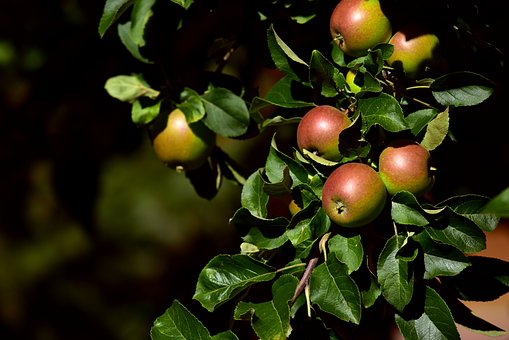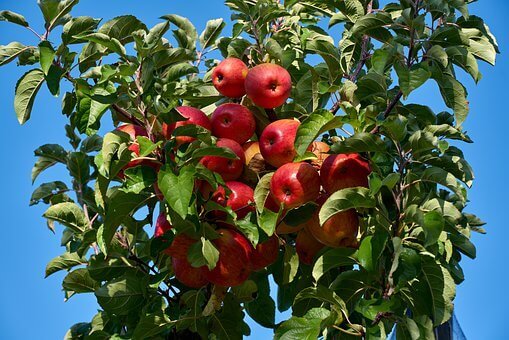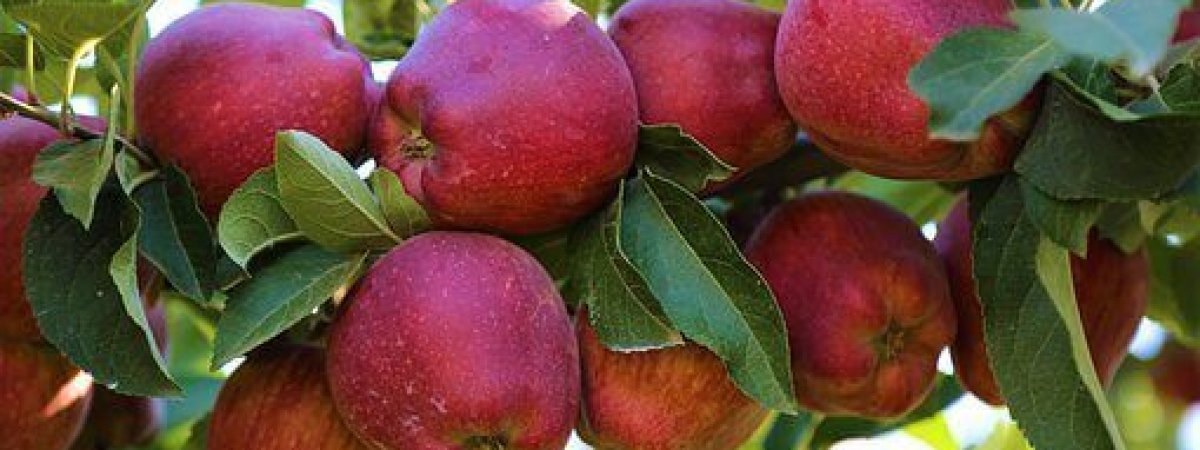Apples are among the most common fruits you will find in the supermarket, but what if we told about the perfectly ripe apple you can pick in autumn right from your backyard? Yes, it is possible to grow your apple trees within your house premises.
However, it takes a lot to understand before committing home gardening, especially knowing how to grow apple trees.
Given the right instructions, growing conditions, and best storing ideas, you can have delicious apples at home. Keep reading!
How to grow apple trees?

Selecting the right location
Apples must be grown in full sun – an area receiving more than 6 hours of direct sunlight daily. Going by the ideal direction, apples get the perfect exposure in the north side of the tree line, house, or rise in comparison to the south.
Apple trees thrive in well-drained soil but must be capable of retaining moisture. The best kind of soil for apple trees is light to medium-textured. The trees don’t grow well when planted in heavy clay soil or poorly drained soil, and may even lead to root rot disease.
Also, make sure the planting site has proper air circulation because only then it will dry faster after irrigation or rainfall. Apple trees are most at risk of fungal diseases in prolonged wet conditions.
You must not plant the apple tree in low-lying areas where cold air settles (frost pocket). Select a higher location to ensure the cold air passes away from the fruit trees.
The suitable soil pH level for growing apple trees is 6.0-6.5, however, the range of 5.5-7 is also acceptable.
So, the ideal location for planting apple trees is the one with well-drained soil with a pH range of 6.0-6.5, and a higher site having proper air circulation.
The planting process
- Remove all the grass and weeds in a 4-foot diameter circle before planting the apple tree.
- Protect the purchased tree from freezing, drying out, injury, or overheating.
- In case the roots dry out, dip them in water for a day before planting.
- The spacing between trees depends on various factors such as soil fertility, rootstock, and pruning.
- You should plant the seedlings or full-size trees at a distance of 15 to 18ft in a row.
- For a dwarfing rootstock, the distance can be 4-8ft in a row.
- Apple trees thrive with cross-pollination. So, you should have a different cultivar planted at the same time within an area of 2000ft or nearer.
- Now, dig a hole 2ft deep and in an area twice the diameter of the rootstock.
- Put some loose soil in the hole and loosen the sides of the hole, ensuring the roots penetrate the soil easily.
- Spread the roots of the apple tree on the loose soil. Don’t let them get curled up or twisted in the hole.
- As you start covering the hole, keep replacing the soil around the roots and firm the soil to get rid of any air pockets.
- Apple trees do not need fertilizers when planted.
- As most apple trees come grafted, you should take care of keeping the graft union 2 inches above the soil line. It keeps the roots from emerging from the scion.
- You can recognize the graft union by checking the swelling at the junction.
- Dwarflings of apple trees are prone to uprooting when under the weight of any heavy crop. Make sure you render a support system for the hedge.
- You can also provide the tree with free-standing support or grow it against a fence.

Taking care of apple trees
After planting the apple trees, you must also make efforts to taking care of the seedlings or trees. Follow the below-mentioned tips:
- Regularly water the young trees, specifically the ones with dwarfing or semi-dwarfing rootstocks. It ensures that you have a well-established root system.
- On intervals, renew the mulch. You should pull it far from the tree during fall to make sure mice don’t nest on it in winters.
- Apple trees need early stages of training to build a firm frame of branches to make it able to endure a load of heavy apples later.
- Pest control measures (discussed later in the blog) are another significant part to take care of while planting apple trees. Using pesticides in the right timing is crucial if you want to prevent any harm to bees and pollination.
- Before applying pesticides, conduct the required research to understand your variety and climate in which the chances of pests attacking the plant is higher. This way you can take the right steps at the right time.
Pruning the apple trees
Pruning a tree slows the growth of the young plant and leads to late fruiting. In the case of pruning apple trees, you need not be in hurry. But, make sure of removing broken, displaced, and dead branches from time to time.
You can go with several techniques to ensure growth without getting into heavy pruning, such as:
- Bend a stem down for several weeks to slow its growth, but promote fruiting and branches. Try tying the branches with string to stakes.
- Shed off the misplaced bugs before they turn into displaced branches over time.
- Prune your apple trees annually to keep it in size and form. However, do this after the tree starts filling in and bearing fruit. By pruning, you can reduce the chances of diseases as it allows more air and light. When the tree is large, it requires more pruning.
- Prune a mature tree after it gets dormant. Remember cutting away the extra vigorous stems (the ones upright).
- Cut off the weak twigs that hang down from the undersides of limbs
- If the stems get droopy, shorten them carefully.
- After ten years of planting an apple tree, fruiting spurs become decrepit and overcrowded. You need to cut it and make room for a younger replacement.
Thinning apples
Mostly, apples don’t require thinning for growing other than the natural thinning during the spring drop every year.
However, for avoiding potential pest attacks and diseases, you can practice thinning after the natural spring drop – 4-6 weeks post bloom – to about 6-8 inches between fruit or one fruit every cluster.
It may seem like a complicated practice but thinning prevents heavy apples from breaking the limbs, evens out production, and ensure the crop tastes delicious.
After fruit-set, get away with the damaged or smallest fruits, leaving a gap of four inches between the remaining apples on the tree.

Harvesting apples
After all the caring, pruning, and thinning (if required), it is time to harvest the apples!
- Pick the apples when the background color is no more green.
- You should be able to part the stems smoothly from its branch while plucking the fruit. Never yank on the apple! A slight twist with the fruit in you palm will do.
- Apples that overripe can be used for cooking.
Note: Different varieties of apples mature at different times, as such the harvest season will extend from August to October.
Storing Apples
- When it comes to storing apples, you must only preserve the ones matured in mid or late season. Early season apples are best to be eaten right after picking.
- You can keep the mid-season varieties for several weeks, while the ones grown late season can be stored for almost five months or even more in a root cellar.
- The appeals you plan to store should not have any blemishes or bruises. It can serve as entry points for pests that lead to rot.
- To store apples, wrap them in a tissue paper or newspaper. Keep the wrapped fruits on trays with proper air circulation.
- You can also store them unwrapped, but make sure they don’t touch.
- Different varieties can be stored for a different period.
- The pest location to store apples is someplace dark, cool, and properly ventilated. You can store the fruit in sheds, garages, etc.
- Don’t choose the basement and attics to avoid excessive heat, low humidity and lack of ventilation.
Note: Keep a check on the stored apples for them browning, rotting, or turning soft.
Pests and diseases affecting apples
Apples are prone to pests, insects, and diseases such as plum curculios, apple maggots, codling moths, and green fruitworms. If you are someone who swears off pesticides, you should at least have an annual spray treatment to have a decent yield – fresh and unaffected.
Here are a few tips on how you can stay away from pests and diseases, and grow a healthy apply tree in your garden:
- Choose disease-resistant varieties, such as Priscilla, Prima, Freedom, and Liberty. These varieties don’t demand spraying like others.
- Check for approved pest prevention programs in your area with your extension service.
- Try using anti-insect oil sold in garden stores. You can spray it during spring season when the apple trees reach the tight cluster stage – after the unfolding of leaves from the fruiting cluster, and before the bids turn to pick.
- Natural parasite predator populations can control other pests like mites, scales, and aphids when you don’t prefer using a lot of sprays.
- Keep away deer, mice and rabbits from the apple trees by wiring the base of the tree with mesh cylinders.
- Prepare a solution of 1 cup of vinegar, 1-quart water and 1 cup of sugar. Pour it in a wide-mouthed jug and hang it in your apple tree, uncovered.
- To keep from diseases, rake apple leaves, grind them using a lawnmower, or bury them in the mulch underneath.
Note: Before planting apples, you should always get into the facts of the fruit being affected by pests and diseases. Usually, it is tough to grow apples organically in the East Coast than the West. In the West Coast, the risk of fungal diseases is the least because of the inexistence of various common pest types and fungus.
Select the right apple varieties
You must choose the right varieties before getting into the question of ‘how to grow apple trees?’. Read on to understand which variety would suit you best, given the weather conditions and location in your area.
Find disease-resistant trees like Jonafree, Liberty, Williams Pride, and Macfree. These allow you to grow the fruit tree organically or with minimum chemicals and easy maintenance.
Choose the right rootstock. Apple trees sold in the stores for planting have two parts – a scion (the top portion that determines fruit variety) and a rootstock (the foundation).
The rootstock can be ‘standard’ or ‘seedling’ (producing full-size trees) or you can have a ‘size-controlling’ or ‘dwarfing’ rootstock (one that grows into a smaller tree, easy to care and harvest).
If you pick a dwarfing, we would suggest going with a Bud 9 rootstock – most common and hardy tree that easily grows in Zone 3 to 5 of the USDA climate zones.
The M9 is also a popularly planted apple rootstock, but it dies in frigid weather conditions.
Purchase bare-root, dormant, nursery trees that are a year old, and have good root systems.
The semi-dwarfs and dwarfs bear fruits in 3-4 years – 1 to 2 bushels yield per year.
You should select the fruit variety based on its characteristics, pollen compatibility, and bloom time. Discuss these factors with a nearby nursery to find which variety of apple trees are good cross-pollinator in your locality.
Some of the best pollinators are Red Delicious, Golden Delicious, Winter Banana, and Grimes Golden. You can choose one for planting.
You can also go with crabapple trees as they bloom along with the desired variety.
You will get to know about apple trees that don’t pollinate themselves – so, you should grow a minimum of two apple trees close to each other for the bees to pollinate.
A young dwarf tree yield around 1 ½ bushel of apples, sometimes lesser when it is a part of an apple hedge. So, for enough fruit, you may need to plant several trees of the same variety.

More on dwarf apple trees
As you know by now, typically there are two types of apple trees – full-sized and dwarf apple trees. Let’s talk in detail about the more popular variety – dwarf apple trees.
Dwarf apple trees mostly grow around the height of 4-8ft, and they are more contained due to their smaller size. This variety is more suitable for espalier-style growing.
You might notice the first production to be very small, but the tree would take less space in the garden/backyard as compared to larger cultivars.
It’s small size also allows you to grow more trees in an area, offering a wider variety of tastes and extended periods of fruit production. Another advantage of growing dwarf apple trees is that they are easy to harvest.
The only drawback of planting dwarf apple trees is that they have weaker root systems and are more susceptible to blow over during heavy storms. So, always grow dwarf trees, alongside a fence or with good support.
Dwarf apple trees are best for a home gardener who is learning the art and not so acquainted with extensive pruning.
In a Nutshell
When you are learning about how to grow apple trees, it is essential to know everything – from the location, choosing the right variety of the fruit to grow, and harvest them well. If you are an amateur gardener planning to grow your apple trees in the garden, we hope this blog helps you with the process.
Let us know how did it go. You can also connect with us with any query.
You may also like to read
How to Grow Blueberries – A Complete Guide
Growing Gooseberries: Know How to Plant and Prune the Savoring Fruit






